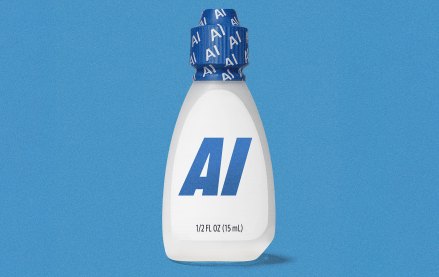Family Dollar, the discount retail chain acquired by rival Dollar Tree four years ago, is struggling.
The chain, which has more than 8,200 stores, delivered 1.4 percent growth in same-store sales during the fourth quarter compared to Dollar Tree’s 3.2 percent.
It’s a pocket of difficulty in a sector that’s deemed one of the most defensible concepts in retail because it’s considered largely e-commerce proof; both Dollar Tree and Dollar General each netted more than $22 billion in revenue last year. But getting the model right is key.
Family Dollar, which was acquired by Dollar Tree in 2015 for $9 billion, continues to be a drag on the parent company. The acquisition has proved challenging because Family Dollar has a different business model, and the integration of the two hasn’t been easy.
Family Dollar is mostly aimed at lower-income families looking to save money; Dollar Tree is aimed at both lower-income but also middle-income families looking for cut-price items to complement a shopping trip. While the $1 price point is enough to fend off other budget retailers, moving into the $1 to $10 range, as Family Dollar has done, could open up Dollar Tree to competition from outside of the dollar-store category.
“Meaningfully higher prices could invite greater competition from Amazon and mass merchandisers,” wrote Morningstar analyst Zain Akbari, in a recent report.
Dollar Tree sells a range of home essentials for $1, focusing on private-label assortments, while Family Dollar relies more on national brands, with prices ranging from $1 to $10. Both businesses have minimal product overlap, but quick-use consumable products make up a major proportion of their offerings. To improve Family Dollar’s position, the parent company plans to close 390 stores, renovate 1,000 of them, and rebrand 200 Family Dollar stores under the Dollar Tree name. It’s an ambitious turnaround plan, but it may be too big a pill to swallow at this point.
“It has to do with integrating a very different concept,” said Loop Capital Markets analyst Anthony Chukumba. “[Family Dollar] was mismanaged for so long — there’s no magic bullet to fixing it; for example, their supply chain is terrible, there are a lot of out-of-stocks, and [staff] morale isn’t so good.”
Dollar Tree did not respond to a request for comment.
Despite the growth opportunity for dollar-store chains, it’s a competitive field. Dollar Tree’s chief competitor, Dollar General, is trying out smaller-format stores called DGX locations aimed at younger shoppers. Meanwhile, Walmart, Amazon and Target are growing their budget private-label offerings; for example, Target’s Smartly private-label brand features a range of essentials for under $2. In addition, in Family Dollar’s fourth-quarter earnings release Wednesday, the company reported a $2.73 billion goodwill impairment charge against the value of Family Dollar, and its underperformance prompted hedge fund Starboard Value, which has a 1.7 percent stake in Dollar Tree, to push for a sale of the unit in January.
Still, Dollar Tree is determined to turn around Family Dollar by closing underperforming stores, renovating others, adding alcohol to 1,000 locations, and rebranding to Dollar Tree stores where appropriate. It’s also testing a new layout called “H2” that includes a refreshed look and a higher number of freezers and coolers.
“Our H2 stores have generated increased traffic and strong sales lift in excess of 10 percent over control stores,” said Gary Philbin, president and CEO, on a call with investors Wednesday. “This new design has shown strong performance in a variety of locations, especially in locations where we’ve been most challenged.” H2 stores will also include some Dollar Tree private-label merchandise.
Brandon Fletcher, senior equity analyst at Bernstein, said Dollar Tree’s challenge is that Dollar Tree and Family Dollar serve two different sets of customers, and the lack of inventory overlap makes it difficult to rationalize the offerings under one banner. He added that Family Dollars are more often located in urban areas, opening them up to competition from other low-cost retailers.
Rebranding and renovating existing Family Dollar stores is also expensive. Philbin pegged the cost of an H2 store to be between $100,000 to $150,000. It’s a burden that supports the argument for a sale instead of a revamp.
“Dollar Tree significantly overpaid for Family Dollar, and this business is proving to be a meaningful distraction,” wrote Starboard CEO Jeffrey Smith, in a letter to Philbin in January. “The Family Dollar and Dollar Tree banners have not truly been integrated and are largely run independently, both from a store operations and supply chain perspective … beyond traditional organizational synergies in back-office functions, we believe that there is little benefit in keeping the Family Dollar and Dollar Tree businesses together.”
More in Marketing

In Graphic Detail: Why YouTube is a genuine threat to Netflix
Digiday has charted exactly how YouTube is a real threat to Netflix, due to its dominance of watch time, user base and its ability to totally reshape viewing behaviors.

At Ebiquity, a new role signals marketing’s shift from metrics to meaning
Marketing has no shortage of data. Ebiquity is betting on judgement.

Lowe’s wants to do more with AI shopping in 2026
Mylow, a shopping assistant powered by ChatGPT that launched in March, is already driving double the conversion rate for online shoppers.








